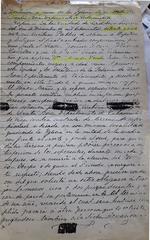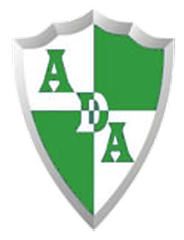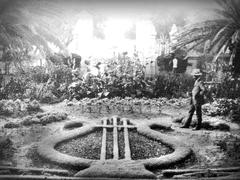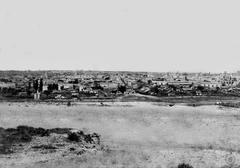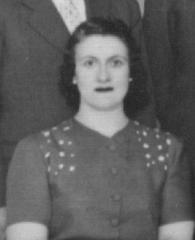
Complete Visitor Guide to Córdoba Historical Sites and Attractions
Date: 14/06/2025
Introduction to Córdoba’s History and Visitor Information
Nestled in the heart of Argentina, Córdoba Province captivates travelers with its harmonious blend of historical grandeur, cultural vibrancy, and natural beauty. As Argentina’s second-largest city, Córdoba is renowned for its colonial architectural heritage, dynamic festivals, and youthful urban energy. Central to its historical identity is the Jesuit Block (Manzana Jesuítica), a UNESCO World Heritage Site that anchors Córdoba’s reputation as a city of learning and architectural marvels. The city’s attractions also extend to the majestic Córdoba Cathedral, the historic Cabildo, and an array of museums that trace both colonial and modern narratives.
Rich in tradition yet alive with innovation, Córdoba’s calendar is filled with cultural events such as the Festival Internacional de Jazz, the Cosquín Folk Festival, and the Feria de Córdoba. Beyond the city core, the scenic Sierras de Córdoba and rural estancias offer outdoor adventures and a glimpse into the region’s agricultural legacy.
This comprehensive guide provides all the essential details you need—from visiting hours and ticketing to accessibility and travel tips—to help you experience Córdoba’s historic sites and vibrant culture. Whether you are drawn to the city’s solemn religious landmarks, lively festivals, or tranquil parks, Córdoba promises a multifaceted journey. For updated information and digital resources, consult the Córdoba Tourism Official Website and the UNESCO Jesuit Block and Estancias listing.
Contents
- Introduction
- Córdoba’s Historical Sites: Visiting Hours and Tickets
- Jesuit Block and Estancias
- Córdoba Cathedral
- Cabildo and Viceroy’s Palace
- Museums and Cultural Institutions
- Parks, Nature, and Outdoor Attractions
- Markets, Shopping, and Local Experiences
- Neighborhoods and Nightlife
- Culinary Highlights
- Festivals and Events
- Practical Visitor Tips
- Accessibility and Visitor Services
- Frequently Asked Questions (FAQ)
- Plan Your Visit: Getting There and Around
- Visual Highlights
- Conclusion
Córdoba’s Historical Sites: Visiting Hours and Tickets
Jesuit Block and Estancias (Manzana Jesuítica)
The Jesuit Block is Córdoba’s most celebrated landmark, comprising the National University of Córdoba, Colegio Nacional de Monserrat, and the Church of the Society of Jesus. As a UNESCO World Heritage Site, it features ornate 17th-century architecture and a legacy that shaped Argentina’s educational and cultural landscape.
- Visiting Hours: Tuesday–Sunday, 9:00 AM–6:00 PM; closed Mondays.
- Tickets: Admission to the museum and church is free; guided tours are available for a fee (~ARS 500).
- Accessibility: Ramps and guided assistance are provided. Some rural estancias may have limited accessibility due to their historic nature.
- Travel Tip: Reserve guided tours in advance, especially during festivals, for in-depth historical and architectural insights.
The Jesuit Estancias—Caroya, Jesús María, Santa Catalina, Alta Gracia, and La Candelaria—are rural estates that reveal the Jesuits’ agricultural and social legacy. Each site has its own visiting hours, generally 9:00 AM–5:00 PM, and entrance fees range from ARS 300–700. (Wikipedia: Jesuit Block and Estancias of Córdoba; UNESCO Site Info)
Córdoba Cathedral
A jewel of colonial religious architecture, the Cathedral of Córdoba faces Plaza San Martín and dates to 1582. Its baroque façade, elaborate interior, and historic crypts make it a must-see.
- Visiting Hours: Daily, 8:00 AM–8:00 PM
- Tickets: Free entry
- Accessibility: Wheelchair ramps at main entrance
Cabildo and Viceroy’s Palace
Adjacent to the cathedral, the Cabildo is a 17th-century government building now serving as a museum chronicling Córdoba’s civic evolution.
- Visiting Hours: Tuesday–Sunday, 10:00 AM–6:00 PM
- Tickets: ARS 150 (discounts for students/seniors)
- Accessibility: Wheelchair accessible
- Features: Arcaded galleries, central courtyard, and audio guides
Museums and Cultural Institutions
Museo Emilio Caraffa
This contemporary art museum, near Parque Sarmiento, hosts rotating exhibitions by Argentine and international artists.
- Hours: Tuesday–Sunday, 11:00 AM–7:00 PM (free on Sundays)
- Accessibility: Wheelchair accessible; virtual tours available
Museo Evita – Palacio Ferreyra
Located in an opulent mansion, this museum displays 19th- and 20th-century Argentine art.
- Hours: Tuesday–Sunday, 10:00 AM–6:00 PM
- Tickets: ARS 150
- Accessibility: Partial; inquire in advance
Museo Municipal de Bellas Artes Dr. Genaro Pérez
Home to collections emphasizing local artists and cultural heritage.
- Hours: Tuesday–Sunday, 10:00 AM–6:00 PM
- Accessibility: Wheelchair accessible
Paseo del Buen Pastor
A former women’s prison now transformed into a lively cultural center with galleries, cafes, and nightly fountain shows.
- Hours: Daily, 10:00 AM–midnight
- Entry: Free; fountain shows at 8:00 PM and 9:00 PM
- Accessibility: Fully accessible
Teatro del Libertador San Martín
Córdoba’s main opera house and theater, hosting opera, ballet, and concerts.
- Box Office: Monday–Friday, 10:00 AM–6:00 PM
- Tours: By appointment
- Accessibility: Wheelchair accessible
Parks, Nature, and Outdoor Attractions
Parque Sarmiento
Córdoba’s largest urban park, designed by Charles Thays, is perfect for walking, boating, and picnics. It houses the city zoo and Emilio Caraffa Museum.
- Hours: Daily, 6:00 AM–10:00 PM
- Entry: Free (zoo/museum charge extra)
La Cañada
A scenic canal lined with stone and willows, ideal for strolls and evening outings. Open at all hours, no entry fee.
Parque Nacional Quebrada del Condorito
A haven for hiking and birdwatching, about 50 km from Córdoba. Known for its dramatic canyons and Andean condors.
- Hours: Year-round, 8:00 AM–6:00 PM
- Tickets: ARS 300+; guided tours available
- Accessibility: Limited due to terrain
Markets, Shopping, and Local Experiences
Paseo de las Artes
A bustling weekend artisan market with crafts, food stalls, and performers.
- Hours: Saturday–Sunday, 10:00 AM–8:00 PM
- Entry: Free
Feria Artesanal
Another artisan fair, especially lively on weekends and holidays.
- Hours: Daily, 9:00 AM–7:00 PM
- Entry: Free
Neighborhoods and Nightlife
Nueva Córdoba
A youthful, energetic district filled with cafes, bars, and restaurants. It is walkable and close to major attractions.
Güemes
Bohemian and historic, Güemes is known for antique shops, art galleries, and vibrant nightlife—particularly around the Paseo de las Artes.
Culinary Highlights
Local Cuisine
Córdoba’s gastronomy fuses traditional Argentine flavors with regional specialties. Sample lomito sandwiches, empanadas cordobesas, locro stew, and the city’s strong café culture.
Notable Restaurants and Cafés
From historic coffee houses to trendy eateries in Nueva Córdoba, the city offers a diverse culinary scene—often with live music or tango shows.
Festivals and Events
- Festival Internacional de Jazz de Córdoba: October, featuring international artists.
- Cosquín Folk Festival: January, in nearby Cosquín, Argentina’s largest folk music event.
- Feria de Córdoba: May, a weeklong celebration of traditional music, dancing, and local cuisine.
- Festival de los Patios: Explore Córdoba’s flower-adorned courtyards, rooted in Moorish tradition.
- Festival de la Guitarra, Festival Internacional de Flamenco, Festival de las Tres Culturas: Celebrating music, dance, and Córdoba’s multicultural heritage.
(Secret Attractions: Cultural Festivals in Córdoba; South America Travel: Top Festivals in Argentina)
Practical Visitor Tips
- Best Time to Visit: March–May and September–November for mild weather and fewer crowds.
- Getting Around: The historic center is pedestrian-friendly. Use the Red Bus or SUBE card for public transport; taxis and ride-sharing apps are widely available.
- Safety: Stick to well-lit, central districts. Remain alert in crowded areas and at night.
- Language: Spanish is primary, but English is spoken in tourist zones.
- Packing: Summers are hot—bring light clothes, sunscreen, and hats. Layer up in spring and autumn. For hiking, pack sturdy shoes.
(Travelling King; Travelsafe-Abroad)
Accessibility and Visitor Services
Many museums and public sites are wheelchair accessible, though some colonial buildings may have limited facilities. Official tourism offices provide maps, brochures, and information on guided tours and accessibility.
Frequently Asked Questions (FAQ)
Q: What are typical visiting hours for Córdoba’s historical sites?
A: Most major sites—such as the Cathedral and Jesuit Block—are open 9:00 AM–6:00 PM, Tuesday–Sunday. Always check official sites for updates.
Q: Are there ticket fees for Córdoba historical sites?
A: Many sites are free (e.g., Plaza San Martín, La Cañada, Cathedral). Museums and some landmarks charge modest fees, generally under ARS 300.
Q: Is Córdoba accessible for travelers with mobility challenges?
A: Most museums and public sites are accessible. Some older buildings may have limitations; check in advance.
Q: Are guided tours available at historical sites?
A: Yes, guided tours (often in multiple languages) are available at landmarks like the Jesuit Block, Cathedral, and museums.
Q: When is the best time to avoid crowds?
A: Visit in the shoulder seasons: March–May or September–November.
Plan Your Visit: Getting There and Around
Córdoba is accessible via Ingeniero Aeronáutico Ambrosio L.V. Taravella International Airport, with flights from major cities in Argentina and nearby countries. The city is a transport hub with extensive rail and bus connections. Popular neighborhoods for accommodations include the historic center, Nueva Córdoba, and Güemes.
For rural excursions—such as the Jesuit Estancias or Sierras de Córdoba—renting a car or joining an organized tour is recommended.
Visual Highlights

Many museums and attractions offer interactive maps and virtual tours on their official websites.
Internal Links
- Top Historical Sites to Visit in Córdoba
- Guide to Festivals in Argentina
- Córdoba Food and Cuisine Guide
Summary and Visitor Recommendations
Córdoba Province is a microcosm of Argentina’s cultural richness, where colonial heritage, Jesuit educational influence, and contemporary life converge. The Jesuit Block and Estancias offer invaluable insights into Argentina’s religious, educational, and architectural history, while the Cathedral, Cabildo, and museums enrich your journey with artistic and social narratives. Picturesque parks, vibrant festivals, dynamic neighborhoods like Nueva Córdoba and Güemes, and local cuisines promise a multidimensional travel experience.
For a seamless visit, use resources like the official Córdoba tourism portal and enhance your stay with mobile apps such as Audiala for real-time updates and guided tours. Córdoba welcomes you to explore its enduring legacy and modern spirit—where tradition and innovation thrive side by side.
Sources and Official Links for Córdoba Tourism
- Córdoba Tourism Official Website
- Jesuit Block and Estancias of Córdoba - Wikipedia
- Córdoba Cathedral Official Page
- UNESCO Jesuit Block and Estancias Listing
- Ruta del Mate: Things to Do in Córdoba
- Secret Attractions: Cultural Festivals in Córdoba
- South America Travel: Top Festivals in Argentina
